I don’t know about you, but I can overwhelm myself pretty quickly with all the directions I’d like to go—and not just in my fabric collage work—there’s other creative ideas, household projects, garden plantings—it could go on and on. And as we all know, there’s those life events that step in and put a halt to everything.
For the world, the halt came with Covid—lot’s of slowing down and re-directing for all of us. It got us to think about the base layer of our lives—what’s important to us, what’s our vision, how do we want to spend our time? In a way, it’s kinda like, “what’s our first draft?”
A first draft is about setting a foundation, getting ideas down—placing the first layer of fabric. The second draft is fixing up what you’ve put down—looking at what’s working (or not) and adding (or subtracting) layers to the vision. The third draft is about fine-tuning what works—making it the best it can be. Maybe even adding some sparkle.
I see working in drafts as breaking down a project into stages or steps. At each draft you review, regroup, and edit, making steady progress along the way.
In her book, Bird by Bird: Some Instructions on Writing and Life, Anne Lamott talks all about drafts and the creative process, but also about the overwhelm—”You don’t have to see where you’re going, you don’t have to see your destination or everything that you will pass along the way. You just have to see two or three feet ahead of you. This is right up there with the best advice about writing, or life, I have ever heard.”
Lamott quoted another writer, E.L. Doctorow, “Writing a novel is like driving a car at night. You can only see as far as your headlights, but you can make the whole trip that way.” And Ralph Waldo Emerson wrote, “It’s the not the Destination, It’s the journey.”
When I started playing with fabric in the early 1980’s (the portrait of my parents above, is from 1983), I’d certainly never heard of Anne Lamott, and I really didn’t know where I was going. But my mom’s dressmaking, upholstery, and quilt-making fabrics and scraps were right there in front of me. So I took those first two or three steps in using fabric as an artistic medium, not even thinking about a destination.
Those fabric collage headlights have led me along for decades, with my style and technique taking a few turns along the way. In the photo below, my parents enjoyed getting an in-progress peek at their grandchildrens’ portrait (though not finished until 2019).
Many of you, my friends and readers, know that my mom recently passed away. That was my halt. Now I’ve had to regroup and get back to my foundation—back to my art. When I felt I could start breathing again, I sat in my studio staring at the first draft of “Winfrieda” my lace polar bear. I thought that getting back to her could be my next step to progress forward. But for the first time I could remember, I felt totally empty. Her eight-foot mass was too big a step.
But I kept showing up in my studio. That’s another thing that Lamott and other authors I’ve read, talk about in their books about the creative process of writing—to show up. In their case, it’s to sit in front of their blank paper, be it real paper or a computer screen—to be present if or when the Muse came. For me, I needed to sit in front of my pinning wall—just in case she showed up.
And there, a few feet down the wall was the sun portrait of my mom that I had recently moved back from her room. My mom had given me some feed-back on the collage in her last weeks: she liked her eyes—their color and the fact they weren’t exactly the same (which they weren’t in real life either); but not her nose—especially the fabric “hairs” she saw under her nose—fair enough. And she liked her smile. The portrait was still a first draft and on my second draft list was, “give teeth variation in value—darken corners of mouth,” but I’m glad they got her approval from the beginning. Now, as I looked at her face again, I knew it was time to start fixing her up in a second draft.
And that’s when the headlights turned back on.
I took a couple days to immerse myself into my mom’s portrait—adding the next layers of fabric to her nose and teeth. In the photos above, first draft are the photos on the left, second draft is on the right. Edits that happen from one draft to another are often subtle, but they do make a difference in the overall image. It was just these two features that I worked on, and still plenty more to do for the second draft, but it was progress. Staring at my mama’s face and showing up to do the work, broke the creative ice and I felt I could face the polar bear.
Since I had already completed the first draft of Winfrieda the polar bear, I knew what was next—make a list of things to “fix up” in the second draft. In the detail photos below is the first draft on left and the second draft on right. Is she done? Nope. I’m still checking off points on that second draft list, though I already have a third draft list begun in my mind. So there is progress.
When I think in drafts—breaking a project into manageable parts of the process—it helps to calm the overwhelm. When I kept in mind that I just had to begin moving from draft 1 to draft 2, in both my mom’s portrait and the polar bear’s, I could do it. I didn’t have to know the destination, I just needed to get back on the road.
Of course, mourning is also a step-by-step process, a journey that progresses with good days and bad days. But my sweet mama gave me a foundation with layers upon layers of memories, to help me move forward one step at a time.
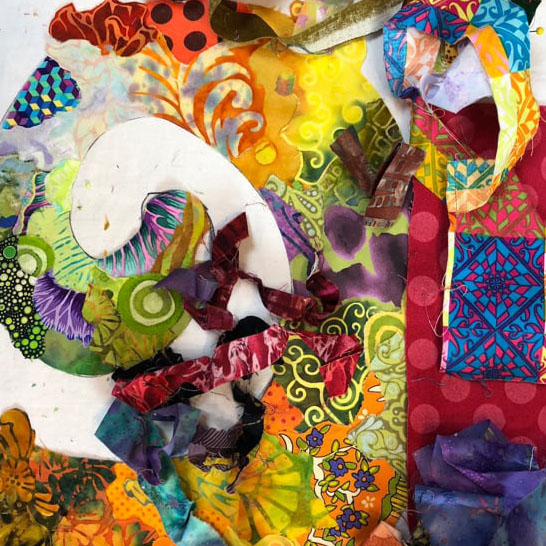
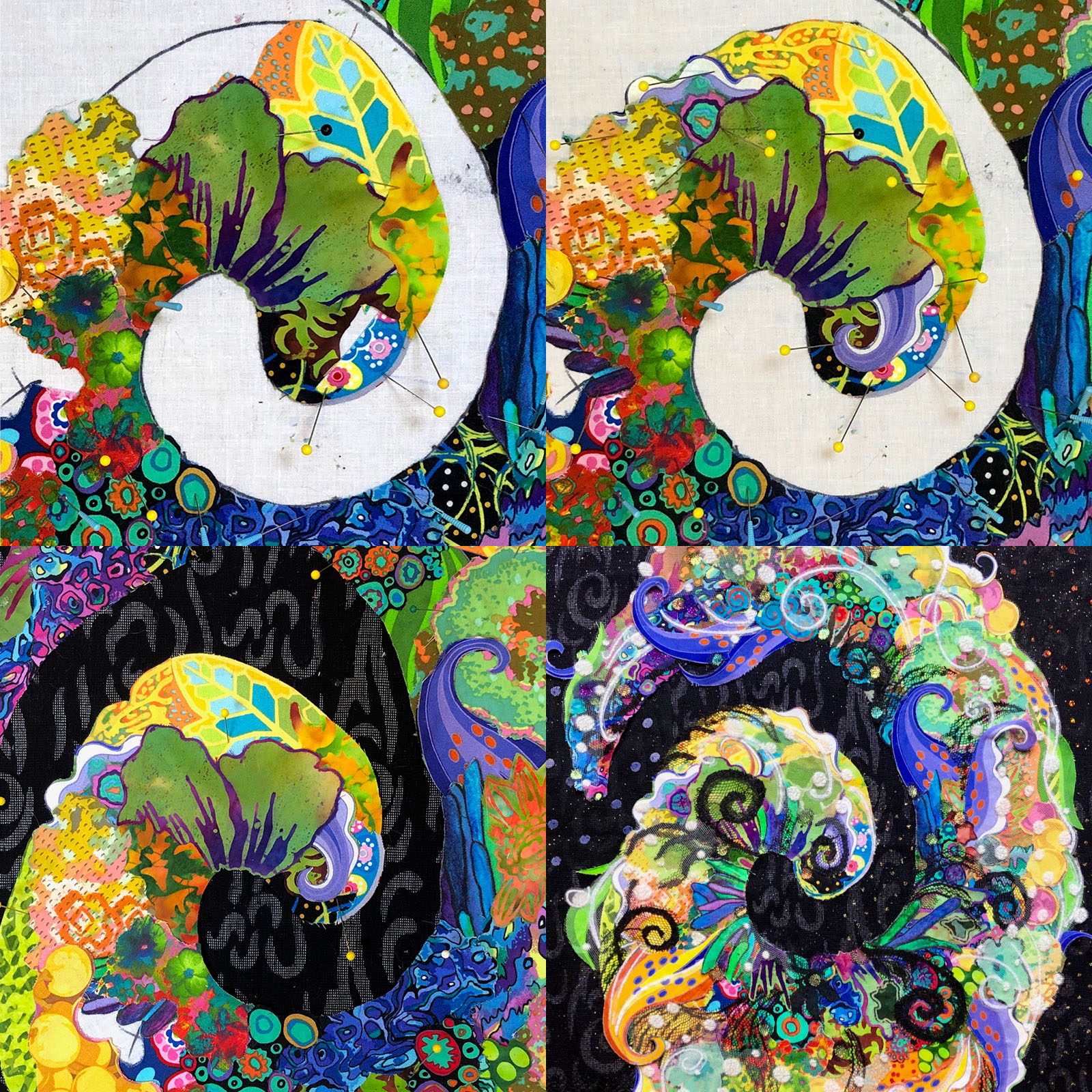
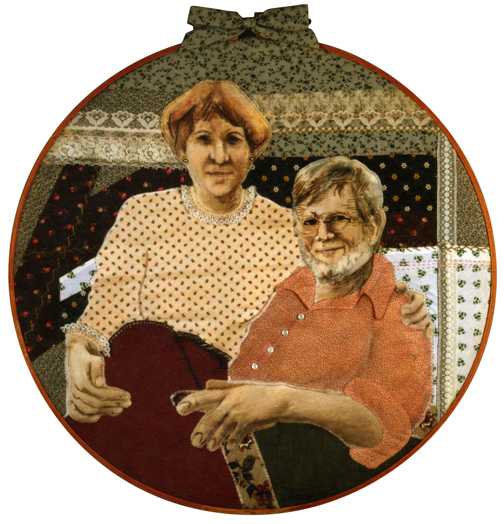
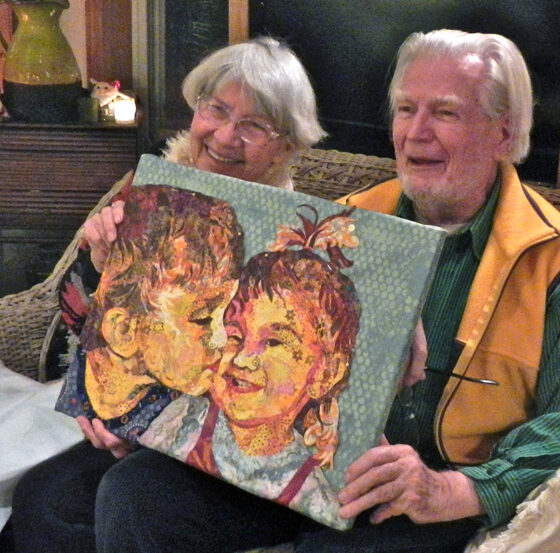
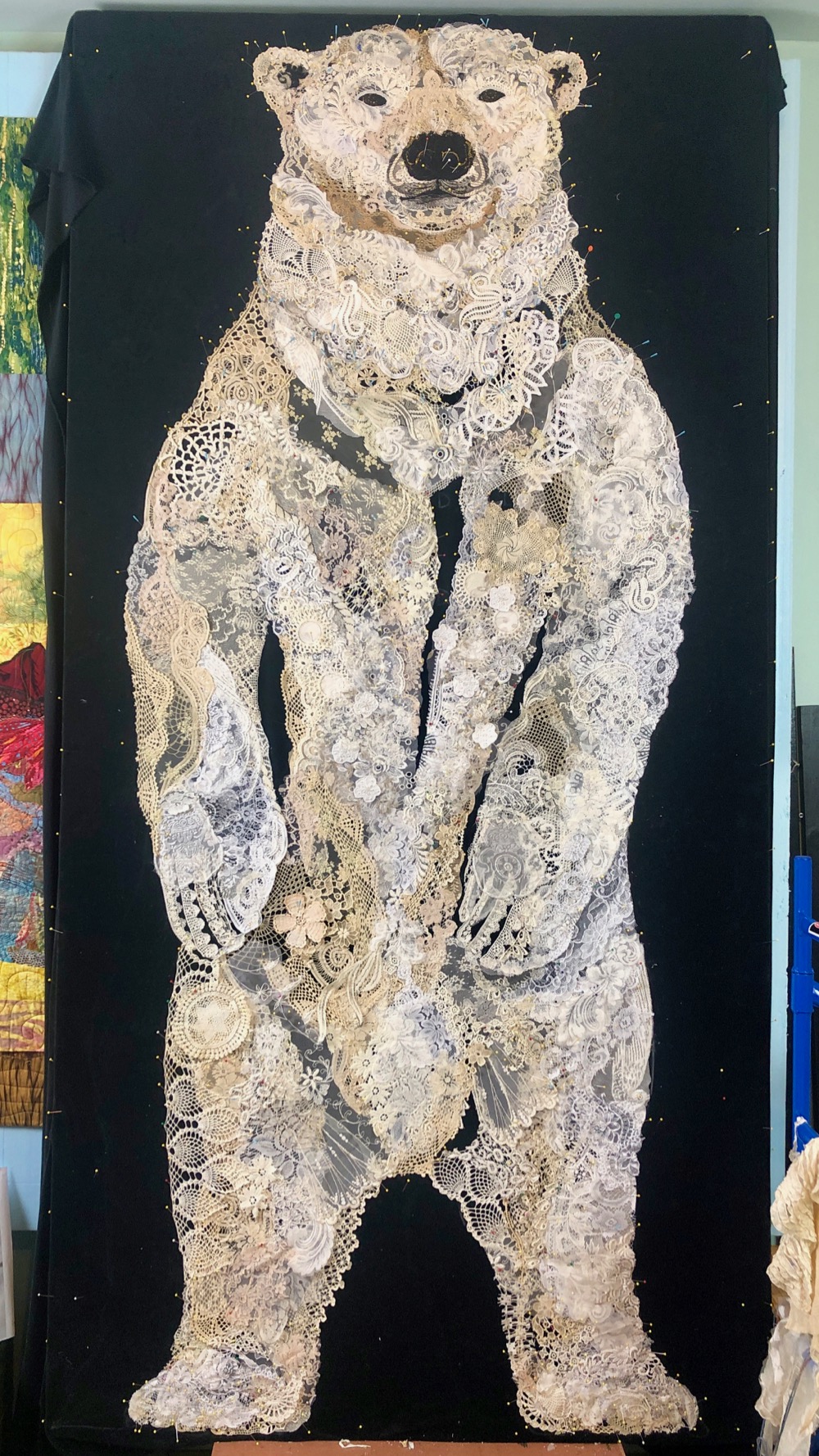
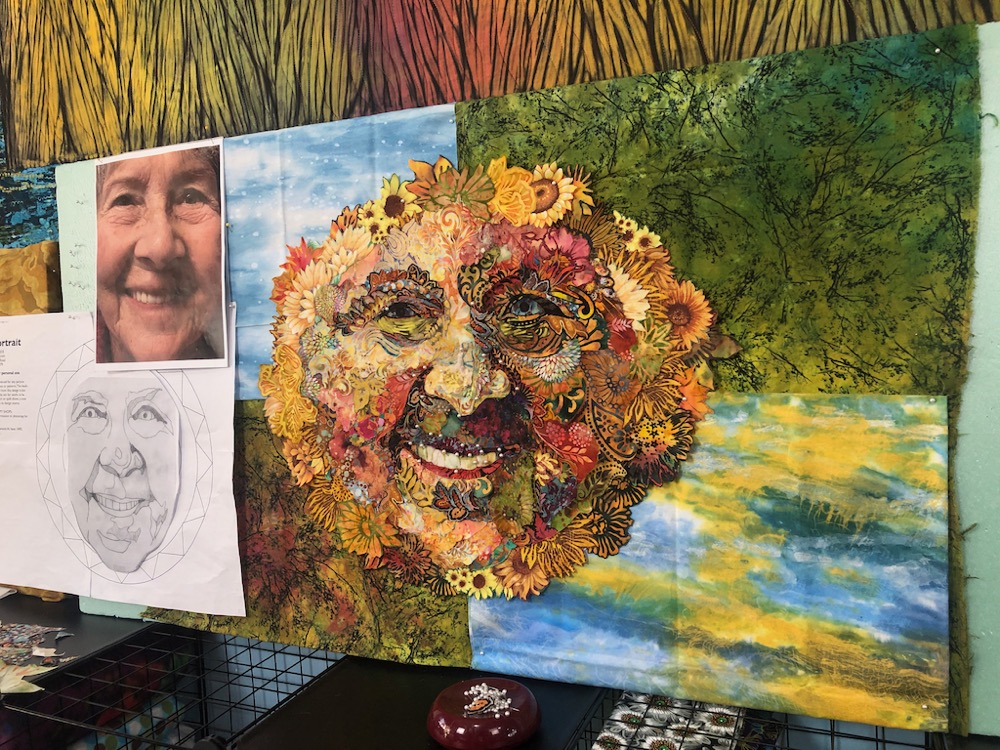






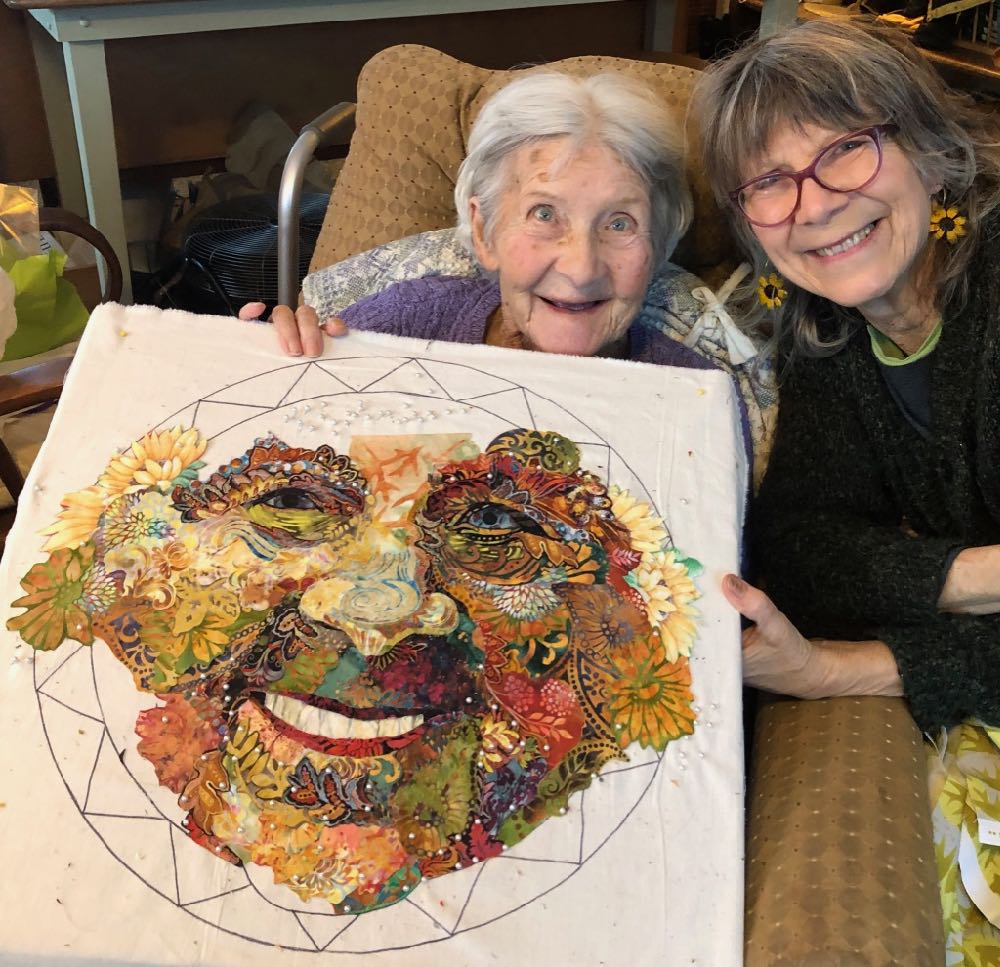
Susan,
“But my sweet mama gave me a foundation with layers upon layers of memories, to help me move forward one step at a time.” Your last sentence of this post says it all. It seems your Mom’s Sun portrait called you and was the perfect project to go back to ‘bird by bird’, into the next draft.
Anne Lamott is a favorite author of mine and I so appreciate you sharing how you have applied her words and other writers in your creative process. The concept of drafts, immersing myself in the process of creating art quilts one step or bird at a time will certainly guide me going forward.
With much gratitude, Susan.
Susan, Creativity can certainly be a fickle and flighty thing; I appreciate your sharing so personally about both the process and your mom. I wish you a sweet mother’s day.
What a sparkling photo of you and your mom! How beautiful and poignant that you were focused on your mother’s portrait in the months preceding her passing. Thank you for your sharing. Happy mothers day and much love to you and to all women, each of us mothering in our own ways.
Beautiful, thank you for sharing 🙂
Absolutely beautiful words, grief is certainly a long term process which takes us all different times to get through. You are so right about just sitting and waiting for things to come to us,
like our mothers guiding hand.